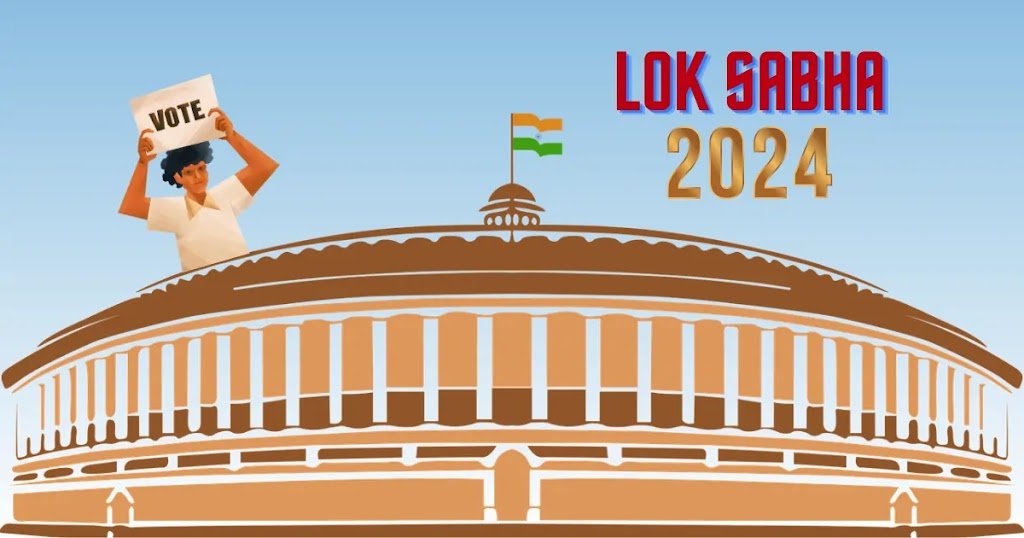The first phase of Lok Sabha Elections 2024 starts tomorrow, 19 April 2024 and you might be searching about how to vote for Lok Sabha elections! Elections are a big deal in India’s democracy and voting is the key to ensure that your voice is heard loud and clear in the corridors of power. Each of the 543 constituencies in the Lok Sabha represents a different part of India, and every Indian citizen above the age of 18 years, gets a chance to shape the next five years of India as a democracy.

Checking Voter Registration Status
- You can easily verify your voter registration status by visiting https://electoralsearch.eci.gov.in or your area’s electoral registration officer.
- Call the Voter Helpline 1950 to verify, remember to include your STD code before dialing.
- You can also send an SMS with the word “ECI” followed by your Electors Photo Identity Card number (EPIC), commonly referred to as the Voter ID card, to 1950. For instance, if your EPIC is 12341234, you can text “ECI 12341234” to 1950.
- To find the location of your polling station, send a message with the word “space” to 1950 or visit the election commission website.
List of Accepted Documents for Voting
| EPIC (Voter ID card) |
| Passport |
| Driving License |
| Service Identity Cards with photograph issued to employees by Central/State Govt./PSUs/Public Limited Companies |
| Passbooks with photograph issued by Bank/Post Office |
| PAN Card |
| Smart Card issued by RGI under NPR |
| MNREGA Job Card (Mahatma Gandhi National Rural Employment Guarantee) Health Insurance Smart Card issued under the scheme of Ministry of Labour Pension document with photograph |
| Official identity cards issued to MPs/MLAs/MLCs |
| Aadhaar Card |
How to vote for Lok Sabha elections on the polling booth?
When you get to the polling station, you’ll see these machines called Electronic Voting Machines (EVMs) and Voter-Verified Paper Audit Trail (VVPAT) machines.
Follow these general instructions to cast your vote in the right manner:
- First up, a polling official will verify if your name is on the voter list. They’ll also ask for your ID proof, just to make sure everything’s in order.
- Next, another polling official will ink your finger and hand you a slip. They’ll then ask for your signature in a register (Form 17A).
- After that, you’ll need to hand over the slip to the third polling official and show your freshly inked finger. Then, you will enter the polling booth.
- Inside the booth, you’ll find the Electronic Voting Machine (EVM). Just locate the symbol of the candidate you want to vote for and give that button a gentle press. You’ll hear a beep to confirm your choice!
- Now, Check out the transparent window on the Voter-Verified Paper Audit Trail (VVPAT) machine. You’ll see a slip with the candidate’s details appear for only 7 seconds, so see it in the required time.
- And hey, if none of the candidates catch your eye, you can always opt for the “NOTA” button, which stands for “None of the Above.”
- Exit the booth, proudly displaying your inked finger.
- With these steps completed, you’ve actively participated in the democratic process.
Various Phases of Voting
The 2024 Lok Sabha elections are set to be a defining moment for India. As citizens prepare to cast their votes, let’s delve into the comprehensive schedule and phases of this democratic exercise.
The Election Schedule
The Lok Sabha elections will unfold in seven phases, spanning from April 19 to June 1, 2024. Each phase will cover specific states and constituencies, ensuring a systematic and inclusive process.
- Phase 1 (April 19): Arunachal Pradesh, Assam, Bihar, Chhattisgarh, Madhya Pradesh, Maharashtra, Manipur, Meghalaya, Mizoram, Nagaland, Rajasthan, Sikkim, Tamil Nadu, Tripura, Uttar Pradesh, West Bengal, Andaman and Nicobar Islands, Jammu and Kashmir, Lakshadweep, Puducherry. In this initial phase, 102 constituencies across various states will go to the polls.
- Phase 2 (April 26): Assam, Bihar, Chhattisgarh, Madhya Pradesh, Maharashtra, Manipur, Meghalaya, Mizoram, Nagaland, Rajasthan, Tamil Nadu, Tripura, Uttar Pradesh, West Bengal, Dadra and Nagar Haveli and Daman and Diu. The second phase covers 89 constituencies.
- Phase 3 (May 7): Assam, Bihar, Chhattisgarh, Madhya Pradesh, Maharashtra, Odisha, Rajasthan, Uttar Pradesh, West Bengal, Jammu and Kashmir, Ladakh. During this phase, 94 constituencies will witness voting.
- Phase 4 (May 13): Voters in 96 constituencies will cast votes in Bihar, Chhattisgarh, Jharkhand, Madhya Pradesh, Maharashtra, Odisha, Rajasthan, Uttar Pradesh, West Bengal.
- Phase 5 (May 20): Bihar, Chhattisgarh, Jharkhand, Madhya Pradesh, Maharashtra, Odisha, Rajasthan, Uttar Pradesh, West Bengal. The fifth phase includes 49 constituencies.
- Phase 6 (May 25): Bihar, Chhattisgarh, Jharkhand, Madhya Pradesh, Maharashtra, Odisha, Rajasthan, Uttar Pradesh, West Bengal. Voters in 59 constituencies participated in this phase.
- Phase 7 (June 1): Bihar, Chhattisgarh, Jharkhand, Madhya Pradesh, Maharashtra, Odisha, Rajasthan, Uttar Pradesh, West Bengal. The final phase will cover 59 constituencies.
As India gears up for this electoral marathon, citizens must exercise their right to vote responsibly. The enthusiasm of first-time voters play a crucial role in a historic turnout. The young citizens, eager to exercise their democratic right, contribute significantly to the electoral process. Young voters want their voices heard. They want to elect leaders who actively engaged with youth, understand their aspirations, and represent their interests. There must be effective implementation of voter awareness campaigns, specifically targeting the youth demographic. We all must celebrate democracy, honor our Constitution, and shape the future of our nation.
Conclusion
The inaugural phase of the 18th Lok Sabha elections began on April 19, 2024. Vote counting is set for June 4. Every vote counts, and each one makes a difference in steering our society toward progress and positive change. Now that you know how to vote for Lok Sabha elections 2024, embrace your power as a citizen and make your choice win by voting on the EVM. Voting isn’t just a civic duty; it’s your chance to shape the future you want to see.











